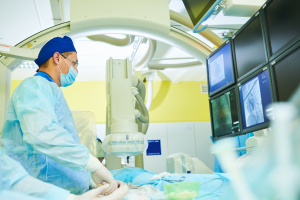by
John R. Fischer, Senior Reporter | December 22, 2020

Few studies on adverse events associated with interventional radiology say that many are preventable
Researchers at Boston University School of Medicine have published a review that calls for more education and resources on risks that lead to adverse events within interventional radiology.
"With an improved understanding of the causes of medical error and the nature of complications, physicians may begin to take the precautions necessary to mitigate the deleterious impact of medico-legal exposure," said corresponding author Dr. Mikhail Higgins, assistant professor of radiology at BUSM, in a statement.
Few studies have documented the prevalence and context of adverse events in interventional radiology, but those that have indicate that many adverse events in it are preventable and occur often due to technical errors. This can be due to improper device positioning and device misuse or malfunction.




Ad Statistics
Times Displayed: 45175
Times Visited: 1385 Keep biomedical devices ready to go, so care teams can be ready to care for patients. GE HealthCare’s ReadySee™ helps overcome frustrations due to lack of network and device visibility, manual troubleshooting, and downtime.
While the majority of interventional radiology patients come away with no adverse events or minor complications, a number of systematic factors linked to the practice increase the risk for medical errors that can lead to preventable harm.
Higgins also serves as the associate director of the Early Specialization in Interventional Radiology program at Boston Medical Center and is the founding chair of the Radiology Interventions Safety, Quality and Complications Symposium (RISQCS). He says continuing to develop safety practices, acknowledging the unique causes of adverse events in the specialty, and continuing medical and graduate medical education will help to prevent these avoidable situations.
"By choosing to embrace a reinvigorated commitment to patient safety and quality assurance in interventional radiology practice and education, the specialty can continue its steadfast evolution on a progressive trajectory that ensures a continued and more optimized quality of care for its patients."
The review was published in
Radiology.

